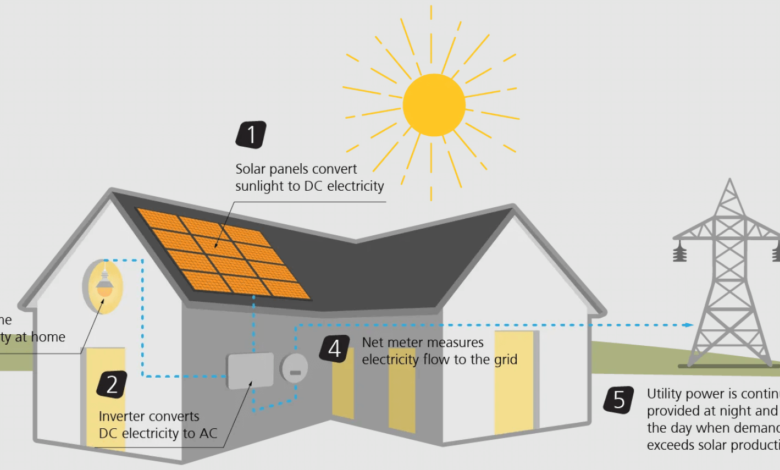
Harnessing the sun’s energy has become an increasingly popular way for homeowners to reduce their reliance on traditional power sources while minimizing their environmental impact. Solar panels on rooftops or in open spaces offer a sustainable and renewable alternative to conventional electricity. However, understanding how these systems function is key to appreciating the benefits they provide. We will explore the science behind solar panels, the technology used, and how energy is transformed from sunlight into usable electricity for your home. By the end, you will better understand how these systems operate.
The Science Behind Solar Energy Conversion
Solar energy is derived from the sun’s radiation, which is available in abundance around the globe. The key technology to convert this energy into usable electricity is the photovoltaic (PV) cell, the primary component of solar panels. When sunlight hits the surface of these panels, it stimulates the electrons in the PV cells, generating a flow of electricity. The PV cells are made from semiconducting materials, usually silicon, which have properties that allow them to absorb photons from sunlight. As photons collide with the silicon atoms, they dislodge electrons, creating an electric current. This process is known as the photovoltaic effect, forming the foundation of how solar panels generate electricity. Notably, this process is silent and clean, producing no direct emissions and relying solely on natural sunlight. The system’s efficiency, however, depends on several factors, such as the quality of the panels, the amount of sunlight received, and how well the system is maintained.
Inverters: Converting DC to AC
Once solar panels have captured sunlight and converted it into direct current (DC) electricity, the next step in the system is transforming this energy into alternating current (AC). Most household appliances and systems run on AC, making this conversion necessary. Inverters are responsible for this task. They take the DC electricity generated by the panels and convert it into AC for your home. In many systems, this inverter is either a central unit that handles the conversion for all panels or microinverters installed directly on each panel to manage the process individually. Microinverters have gained popularity for their ability to optimize energy conversion on a panel-by-panel basis, meaning that if one panel becomes shaded or less efficient, it doesn’t affect the output of the other panels. The inverter also plays a vital role in monitoring the system’s performance, often providing data about energy production, efficiency, and potential issues. This feedback helps homeowners and technicians ensure that the solar system is working at its optimal level.
Energy Storage and Usage
One of the key questions many homeowners have is how solar energy can be stored and used, especially during cloudy days or at night. Solar panel systems often use batteries that store excess energy generated during the day for later use. These solar batteries store DC electricity and release it as needed when solar panels are not generating enough power to meet household demand. By integrating a battery into the system, homeowners can use solar energy even when sunlight is unavailable, reducing reliance on the grid and increasing energy independence. Additionally, the stored energy can be a backup during power outages, providing continuous electricity when the grid is down. However, not all solar panel systems come with batteries by default, as they add to the overall cost of the installation. Some homeowners rely solely on net metering, which allows them to send excess energy back to the grid in exchange for credits. These credits can offset electricity costs when solar power generation is low, such as during the winter or at night.
Read also: Web Design Solutions That Drive Engagement and Increase Conversions
Net Metering and the Grid
Net metering is a crucial component of many solar panel systems. It allows homeowners to feed surplus energy from their solar panels back into the electrical grid in exchange for credits. During times when solar panels produce more electricity than the home is using, such as during the day when the sun is shining brightly, the excess energy is sent to the utility grid. This energy helps power nearby homes and businesses; in return, the homeowner receives credits from their utility company. These credits can be used when the solar panels are not producing enough energy to meet demand, such as at night or on cloudy days. In this way, net metering helps balance a home’s energy production and consumption, ensuring that homeowners can reduce their electricity bills while still maintaining access to grid power when needed. However, net metering policies can vary by region, so homeowners need to understand the specific regulations in their area. In some cases, there may be limits on the amount of excess energy that can be credited or used, which could impact the overall savings potential of the system.
Solar panel systems installed by North Valley Solar Power are an innovative and sustainable way for homeowners to generate electricity, reduce their environmental impact, and save on energy costs. By understanding how these systems work—from capturing sunlight through photovoltaic cells to converting it into usable electricity and storing it for later use—homeowners can make informed decisions about investing in solar energy. With advancements in technology, solar panels are becoming more efficient and accessible, making them a viable option for more households across the globe. As we continue to seek cleaner and more sustainable energy sources, solar power is a key solution for the future.



